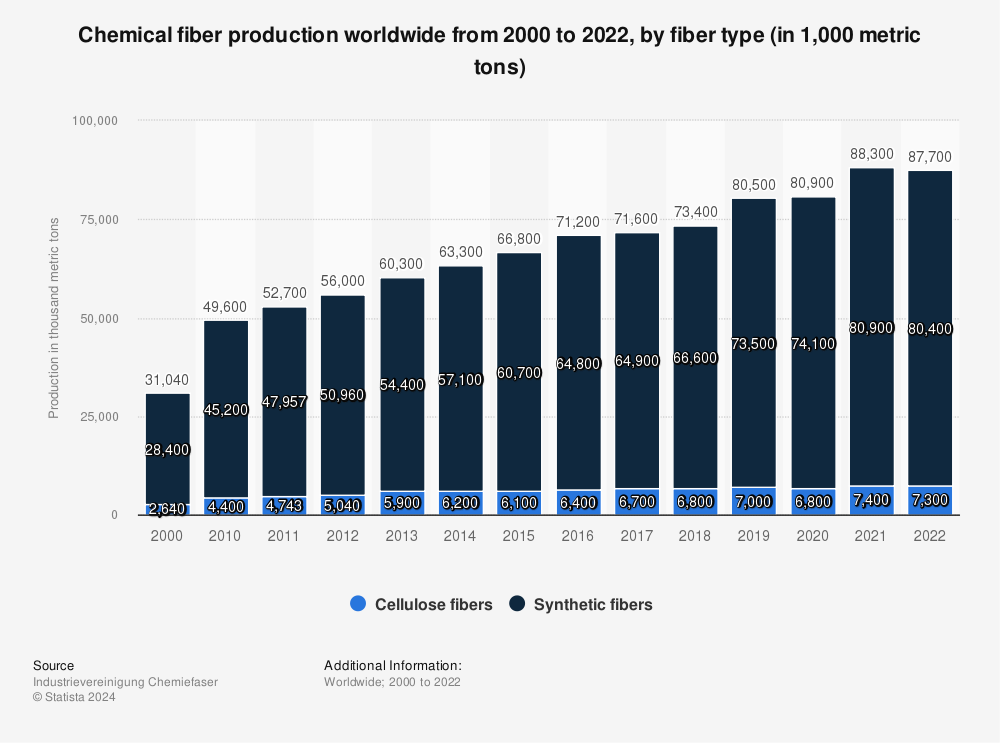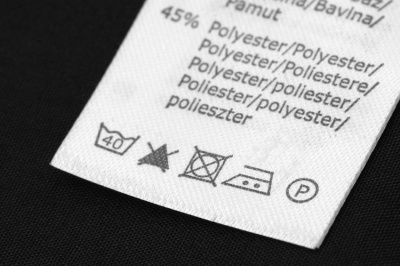The textiles chemicals market is a large global market that looks set to continue to grow in the coming years. The market has demonstrated a CAGR of 4% over the last several years and this is expected to continue. But what precisely are textiles chemicals? What are they used for? And how is this market segmented? Let’s take a look at this lesser-known industry, how it operates and why it’s one to watch.
Textiles chemistry regards the creation of a range of specific fabrics. If you are wearing clothes from a high street store right now, chances are that they were fabricated at least partially in this manner. Have you ever wondered how it is that some fabrics can protect you against driving rain and freezing cold? Have you considered how compression fabrics work, or how some fabrics claim to be breathable for runners while still being waterproof?
This is precisely where textiles chemistry comes in. This is a specialized field that essentially applies principles from chemistry to the creation of fabrics to a range of different ends. In some cases, this will mean creating new fabrics from scratch with specialist properties. In other cases, it will mean treating existing fabrics in order to provide them with those properties.
In general, we can divide textiles chemistry into a number of areas. These are:
- Dyeing
- Finishing
- Fiber and polymer chemistry
- Blending textile materials
Textiles chemistry requires an understanding of the workings of fibers, including both natural and synthetic types. There is an increasing interaction between textiles chemistry and materials science. This includes the treatment of surfaces.

Find more statistics at Statista
Polymers
Many textiles chemists are trained in polymer science.
A polymer is a large molecule, which is technically known as a macromolecule (here, macro is the opposite of micro). The molecule is made from ‘repeating structural units’, meaning that it is made from sub units connected by chemical bonds. The term polymer can be used to describe plastics and is, for instance, used in 3D printing and injection molding. However, polymers have many uses that go far beyond just plastics. For instance, polyester is an example of a polymer and also an example of textiles chemistry. Polyester is a synthetic polymer that is made through purified terephthalic acid or dimethyl ester dimethyl.
This incredibly versatile fabric has a market share of 18% of all plastic materials produced and this is behind other polymers including polyethylene and polypropylene. To be defined as polyester a fabric needs to be created from long-chain polymers that are chemically composed of 85% ester and dihydric alcohol, with a terephthalic acid. The name literally means multiple (poly) monomers (esters).
Due to the incredible large variation of possible polymeric materials, polymers play important roles in nearly every aspect of every day life. They are used in plastic pipes, in water containers and in much more. As we’ve seen, they’re also used in the creation of many artificial fabrics for clothing. Examples of natural polymers include shellac, rubbers, and even amber. In fact, protein polymers are the basis of all life!
Very often, carbon atoms are what are used in order to provide the linked ‘backbone’ of the polymers. This is why you might have heard the phrase ‘carbon-based lifeform’.
Polymers are created through one of two laboratory processes. These are ‘step growth polymerization’ and ‘chain-growth polymerization’. In chain growth, the monomers are added one at a time, as in a chain. In step growth, chains are combined directly. There are other forms too, such as plasma polymerization that do not fit either of these categories. This is still a large area of interest with research being conducted into the synthesis of biopolymers such as proteins in particular.
Chemicals Used
Many other chemicals are used in textiles chemistry. These include:
- Textile auxiliaries – which clean fibers and smooth materials
- Complexing agents – which form stable water-soluble complexes
- Dispersing agents
- Emulsifiers
- Dyes
- pH regulators
- Carriers
- Finishes
- UV absorbers
- Wetting agents (for accelerating the penetration of finishing liquors)
- Leveling agents
- Dye-protective agents
Of course it is important that all of these chemicals also be tested for their safety for humans and that they won’t act as irritants.
Education and Jobs
Textiles chemistry has an impact on many sectors. In education, a number of schools specialize in textile chemistry (though a textile degree is not always required for employment). In the workplace, the use of textile chemistry is almost always business or product oriented. Chemists generally work in labs or plants, usually in multidisciplinary teams and sometimes directly with customers and clients to help with the development of new clients. Once the new fabric has been synthesized for the first time, it will then be mass produced by a production line.
As businesses become more global, chemists are required to travel and to help produce fabrics overseas. Chemists are employed all around the world by a range of chemical companies that specialize in the manufacture of polymers. With increasing demand for more and more eco-friendly fabrics and with better awareness of the many products that are possible with this technology, we are seeing an increase in employment in this sector as the market grows.
Conclusions
As you can see then, the textiles chemicals market is one that is hugely influential on a number of other large markets. From clothing and apparel (of course), to the fitness industry, to furniture and décor, to even a range of other materials and surfaces. Textiles chemistry is unlikely to go anywhere any time soon and with the market growing steadily and set to continue to grow at this rate over the coming years, this is a good time to invest. With increased interest in health and fitness, as well as in eco-friendly product manufacturing, energy efficiency and more, the demand for polymers is only likely to increase.
